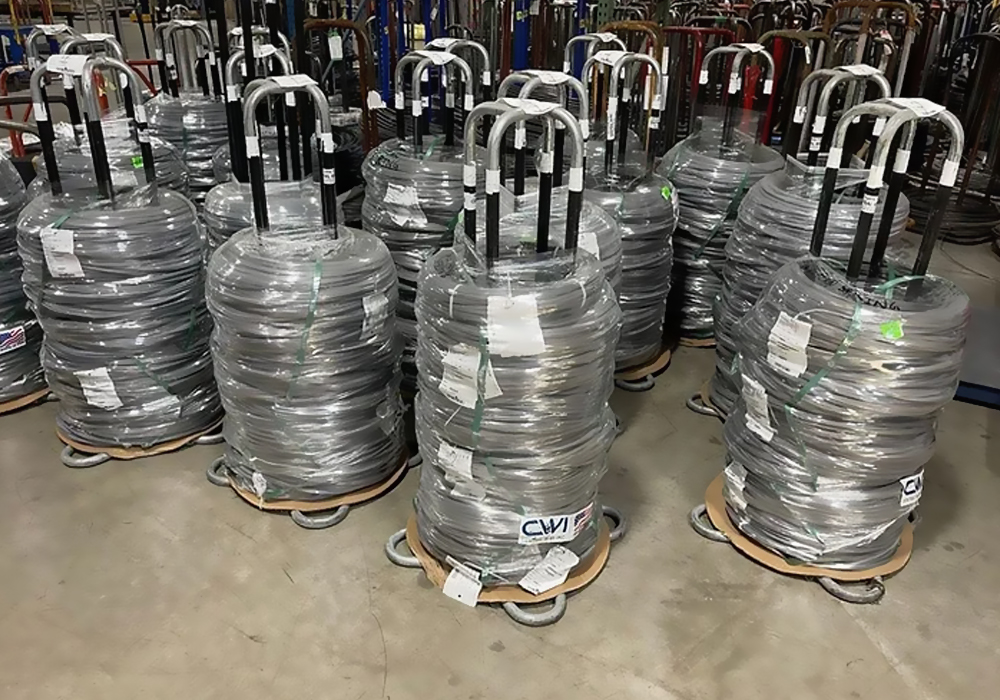
Choosing the Right Spring Materials for Optimal Performance and Longevity
wire form and material selection plays a critical role in the design and performance of various products.
The choice of materials for wire forms and springs has a profound impact on their efficiency, functionality, and longevity. Selecting the appropriate materials can optimize product performance, enhance energy efficiency, and ensure long-term durability.
Objective: Properly Selecting Spring Material Type
In this article, we delve into the fascinating world of wire form and spring material selection, exploring how the right choices can significantly influence product outcomes. We will examine the considerations, options, and implications involved in the process, empowering designers and engineers to make informed decisions that lead to improved product efficiency and longevity.
Understanding the mechanical properties, corrosion resistance, temperature characteristics, and cost-effectiveness of materials is vital in selecting the most suitable options for wire forms and springs. By carefully evaluating these factors, manufacturers can ensure that their products meet the desired performance requirements and withstand the rigors of their intended applications.
We will also explore the impact of spring wire material selection on product efficiency and longevity. Discover the key considerations to keep in mind, best practices for making informed choices, and the critical role that material selection plays in the overall success of your products. Let us unlock the potential of proper material selection and pave the way for optimized performance and extended product lifespans.
Key Considerations for Material Selection
When it comes to wire form and spring material selection, several key considerations play a vital role in determining the most suitable options for a specific application. By evaluating these factors, designers and engineers can make informed decisions that result in optimal product performance and longevity.
Mechanical Properties
The mechanical properties of wire form and spring materials are crucial in ensuring their functionality and durability. Tensile strength, elasticity, and fatigue resistance are essential characteristics to assess. Materials with high tensile strength can withstand the applied forces without deformation, while sufficient elasticity allows for proper spring action. Additionally, fatigue resistance ensures that the wire forms and springs can endure repetitive loading cycles without structural failure.
Corrosion Resistance
In environments where wire forms and springs are exposed to moisture, chemicals, or other corrosive substances, selecting materials with excellent corrosion resistance is essential. Stainless steel and other corrosion-resistant alloys are commonly chosen for their ability to withstand corrosion, preventing premature degradation and maintaining the performance and appearance of the components over time.
Temperature Range and Thermal Properties
Wire forms and springs may encounter a wide range of temperatures in different applications. Considering the temperature characteristics of the materials is crucial to ensure their reliability and performance under varying thermal conditions. Some materials exhibit superior heat resistance, making them suitable for high-temperature applications, while others may be more appropriate for low-temperature environments.
Cost-effectiveness and Availability
Practical considerations such as cost-effectiveness and material availability play a significant role in material selection. Balancing the desired material properties with the overall cost of production is important for cost-efficient manufacturing. It is also crucial to ensure that the chosen materials are readily available in the required quantities to support production schedules and avoid potential delays.
Our Available Spring and Wire Form Materials:
At Western Manufacturing, we offer a wide range of common spring materials for your projects.These materials provide varying combinations of mechanical properties, corrosion resistance, and thermal characteristics, allowing us to cater to diverse application requirements. Our team of experts can guide you in selecting the most suitable material for your specific needs, ensuring the optimal performance and longevity of your wire forms and springs.
By considering these key material selection factors and leveraging our available materials, you can confidently design and manufacture wire forms and springs that meet the highest standards of quality, performance, and reliability.
Impact of Material Selection on Product Efficiency
The material selection for wire forms and springs has a significant impact on the efficiency of the final product. By carefully considering the properties of the chosen materials, manufacturers can optimize performance, enhance energy efficiency, and ensure the longevity of their products.
Spring Functionality
One of the key ways material selection influences product efficiency is through its effect on functionality. The mechanical properties of wire form and spring materials, such as tensile strength, elasticity, and fatigue resistance, directly impact their ability to perform their intended functions. Materials with high tensile strength can withstand the applied forces without deformation, ensuring reliable operation. Sufficient elasticity allows for proper spring action, enabling efficient energy transfer and precise movement. Additionally, materials with excellent fatigue resistance can endure repetitive loading cycles without failure, contributing to long-term product reliability.
Energy Efficiency
Another aspect of product efficiency affected by material selection is energy efficiency. By choosing materials with suitable properties, manufacturers can minimize energy losses and maximize the conversion of input energy into useful output. For example, materials with low friction coefficients can reduce energy dissipation due to frictional forces, enhancing overall energy efficiency. Additionally, selecting materials with optimal stiffness and damping characteristics can help minimize energy losses through vibrations, improving the efficiency of the product’s operation.
Load-Bearing and Capacity
Furthermore, material selection plays a crucial role in determining the load-bearing capacity and stress resistance of wire forms and springs. Materials with high tensile strength and appropriate yield strengths can withstand heavy loads and high-stress conditions without permanent deformation or failure. This ensures the product’s ability to perform reliably under demanding circumstances, contributing to its overall efficiency and longevity.
By carefully considering the impact of material selection on product efficiency, manufacturers can make informed decisions that optimize performance and energy efficiency. Through the appropriate choice of materials, wire forms and springs can operate more efficiently, conserving energy and enhancing the overall performance and longevity of the final product.
Wire form material selection is a crucial aspect of product design and performance.
The careful consideration of materials can significantly impact product efficiency and longevity. By understanding the key considerations and evaluating factors such as mechanical properties, corrosion resistance, temperature characteristics, and cost-effectiveness, manufacturers can make informed decisions that optimize performance and ensure the reliability of their products.
The right material selection for wire forms and springs directly influences functionality, energy efficiency, and load-bearing capacity. Choosing materials with suitable mechanical properties allows for reliable operation, precise movement, and long-term durability. Corrosion-resistant materials prevent premature degradation, ensuring the longevity and appearance of the components. Characteristics like heat resistance enables the product to withstand varying thermal conditions without compromising their performance. Moreover, cost-effectiveness and material availability are practical considerations that impact the overall feasibility and economic viability of the manufacturing process.
By leveraging the available materials, such as music wire, stainless steel, Inconel, and other options, manufacturers can tailor their wire forms and springs to meet specific application requirements. Each material brings unique properties and benefits, allowing for customized solutions that deliver optimal performance and longevity.
With a comprehensive understanding of material selection and the utilization of available materials, manufacturers can create wire forms and springs that meet the highest standards of quality, performance, and reliability. By investing in proper material selection, manufacturers can enhance their products’ competitiveness, customer satisfaction, and overall success in the marketplace.







